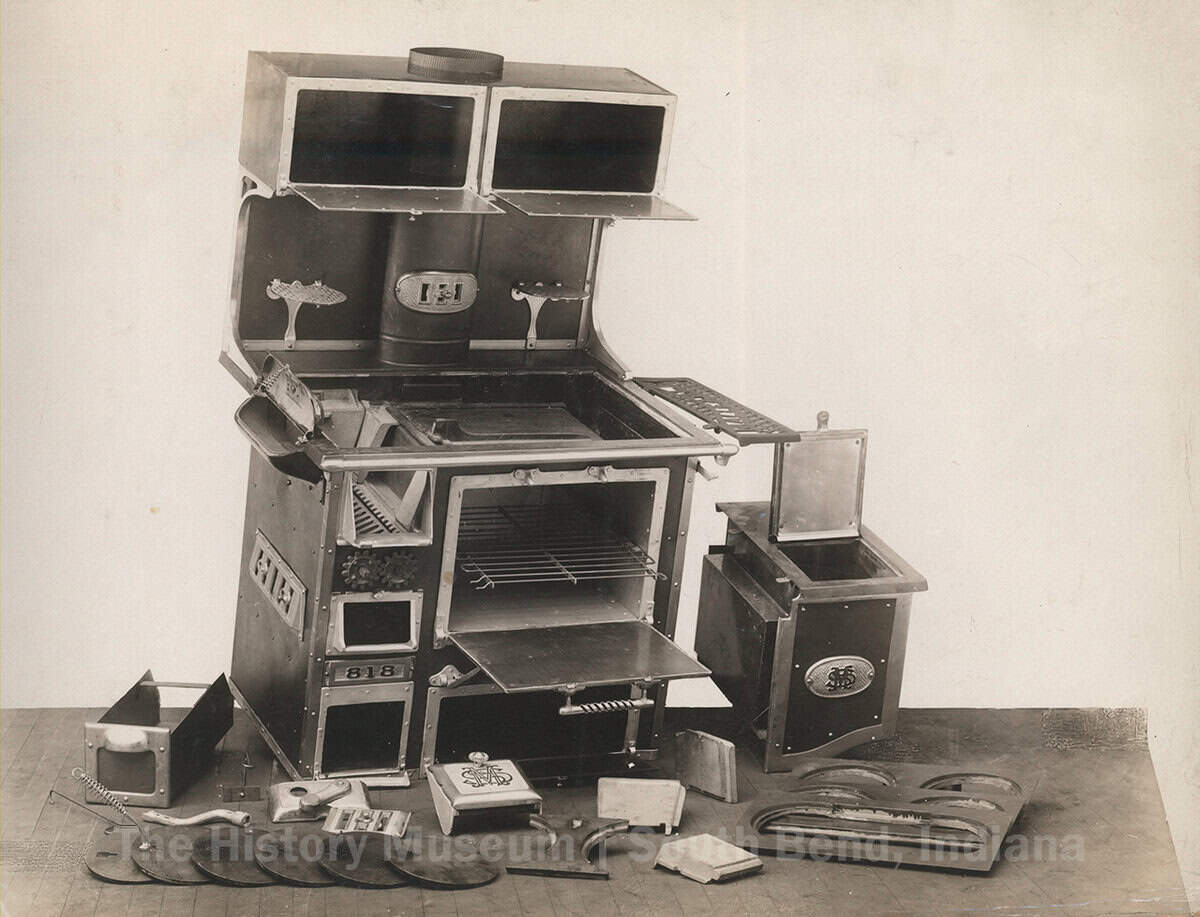South Bend Range Company
Location: 2001 W Washington St, South Bend
In 1898 Jacob Woolverton and William Kizer, two South Bend real estate agents, established the Malleable Steel Range Manufacturing Company to make coal and wood-fired kitchen ranges. Perhaps Woolverton and Kizer originally became involved in the stove business as investors, since their other business ventures had already brought them success. Their early partners, Irving Sibley, a South Bend hardware merchant, and Harry A. Engman, Jr., the 24-year-old son of a St. Louis stove manufacturer, had the expertise for the business.
The company originally operated on E. Tutt Street, conveniently located close to Sibley Machine and Foundry, the producer of many cast iron parts needed for the ranges. Sheet metal for the sides and malleable steel for the cooking surfaces comprised the other major components of the ranges. By 1908, Malleable Steel Range had outgrown its Tutt Street location and moved to a large modern factory building of reinforced concrete, steel, and brick on Cherry Street on South Bend’s west side. The new factory was on a railroad line, so important for shipping.

In the early 20th century, the company employed about 200 men, manufacturing 25,000 ranges and other cooking equipment annually. After the parts were selected, sheet metal cut, and cast iron plated and polished, teams of two men-a range maker and his helper-assembled the parts into finished ranges. Fitting the tops onto the ranges was the most critical part of assembly. This system of putting together stoves differed from the later adopted moving assembly line, where each man performed only one operation all day long.
The company added hotel and restaurant ranges to its line of products, since special orders and unusual sizes could be easily fabricated using standard parts and specially cut sheet metal. By the early 1930s, these hotel stoves, as well as broilers, steam tables, and other cooking equipment, became the company’s primary products. Gas replaced coal and wood as the fuel for the ranges, which required changes in design. The company produced enameled gas stoves in different colors, which replaced the big black nickel-plated ranges for home use during the 1920s. In the late 1930s, South Bend Range announced plans to build electric cookstoves for the home market. However, during World War II, the company made cooking equipment only for restaurants, hotels, and the armed forces and so probably never returned to domestic stove production after the war.
Malleable Steel Range used the trade name “South Bend” from the 1910s and became more familiarly known as South Bend Range early on, although it did not officially take that name until the late 1950s. In 1982, the company’s name changed again to Southbend Escan Corporation after it merged with Escan Metal Canada, Ltd. The Woolverton family, which had bought out the other early investors by 1917, continued to be associated with the company until the 1970s. Harry Engman established a rival stove manufacturer, Engman-Matthews Range, which did not survive the 1920s.
Southbend Escan moved all of its production to North Carolina and its executive offices moved from Cherry Street to new quarters in the Airport Industrial Park in 1983.
You can visit their website: Commercial Kitchen Equipment | Southbend Restaurant Equipment
Users may download material displayed on this site for noncommercial, educational purposes only, provided all copyright and other proprietary notices contained on the materials are retained. Unauthorized use of the Northern Indiana Historical Society d/b/a The History Museum’s logo and Web site logo is not permitted. The contents of this site may not be used for commercial purposes, without written permission of the Northern Indiana Historical Society d/b/a The History Museum. To obtain permission to reproduce information on this site, submit the specifics of your request in writing to Director of Marketing & Community Relations, The History Museum, 808 West Washington Street, South Bend, Indiana 46601 or If permission is granted, the wording “provided with permission from the The History Museum” and the date must be noted. However, permission is not required to create a link to the The History Museum’s Web site or any pages contained therein.
